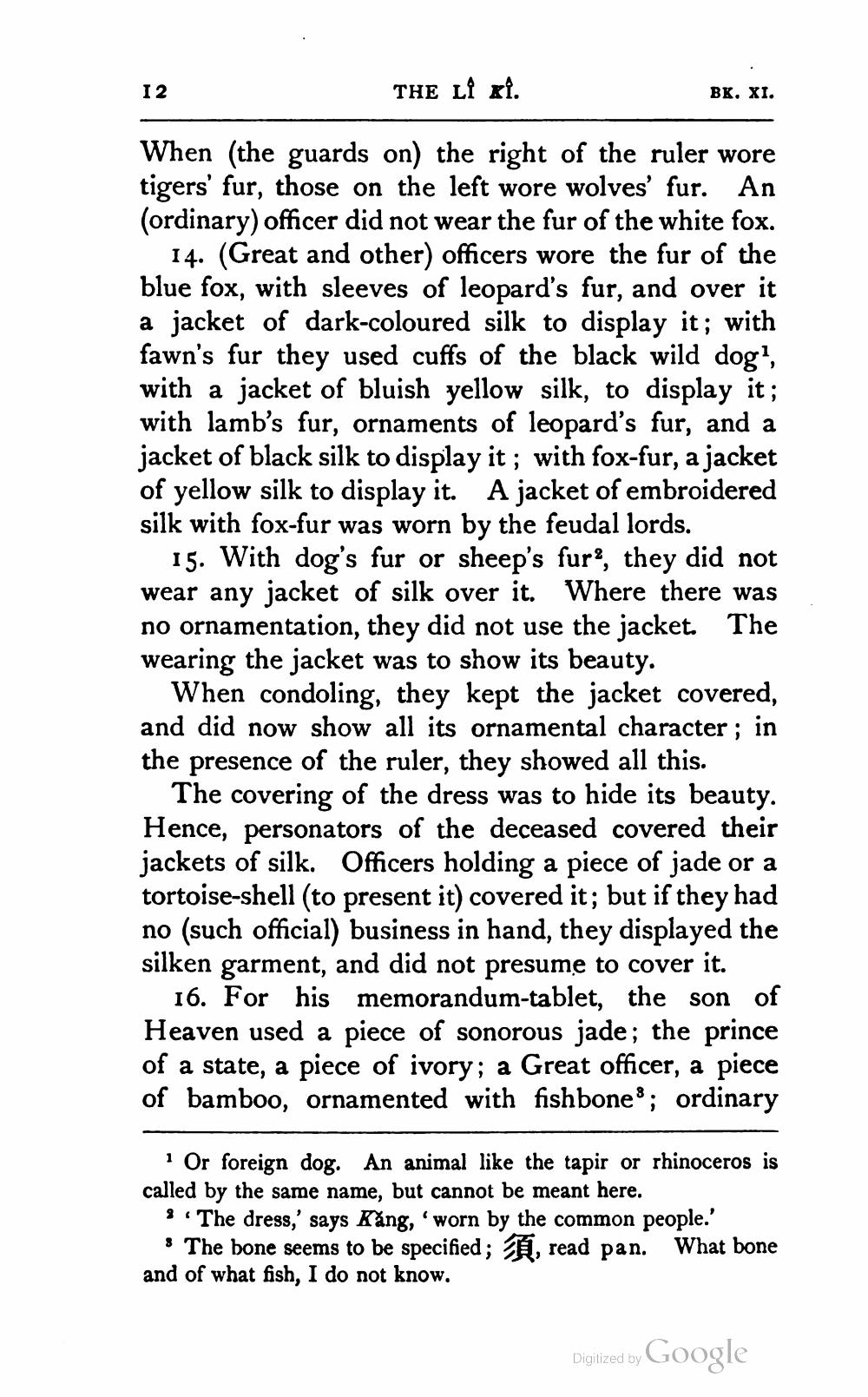________________
I 2
THE LÎ xi.
BK. XI.
When (the guards on) the right of the ruler wore tigers' fur, those on the left wore wolves' fur. An (ordinary) officer did not wear the fur of the white fox.
14. (Great and other) officers wore the fur of the blue fox, with sleeves of leopard's fur, and over it a jacket of dark-coloured silk to display it; with fawn's fur they used cuffs of the black wild dog, with a jacket of bluish yellow silk, to display it; with lamb's fur, ornaments of leopard's fur, and a jacket of black silk to display it ; with fox-fur, a jacket of yellow silk to display it. A jacket of embroidered silk with fox-fur was worn by the feudal lords.
15. With dog's fur or sheep's furo, they did not wear any jacket of silk over it. Where there was no ornamentation, they did not use the jacket. The wearing the jacket was to show its beauty.
When condoling, they kept the jacket covered, and did now show all its ornamental character; in the presence of the ruler, they showed all this.
The covering of the dress was to hide its beauty. Hence, personators of the deceased covered their jackets of silk. Officers holding a piece of jade or a tortoise-shell (to present it) covered it; but if they had no (such official) business in hand, they displayed the silken garment, and did not presume to cover it.
16. For his memorandum-tablet, the son of Heaven used a piece of sonorous jade; the prince of a state, a piece of ivory; a Great officer, a piece of bamboo, ornamented with fishbone ®; ordinary
1 Or foreign dog. An animal like the tapir or rhinoceros is called by the same name, but cannot be meant here.
3.The dress,' says Káng, 'worn by the common people.'
* The bone seems to be specified; , read pan. What bone and of what fish, I do not know.
Digitized by Google




